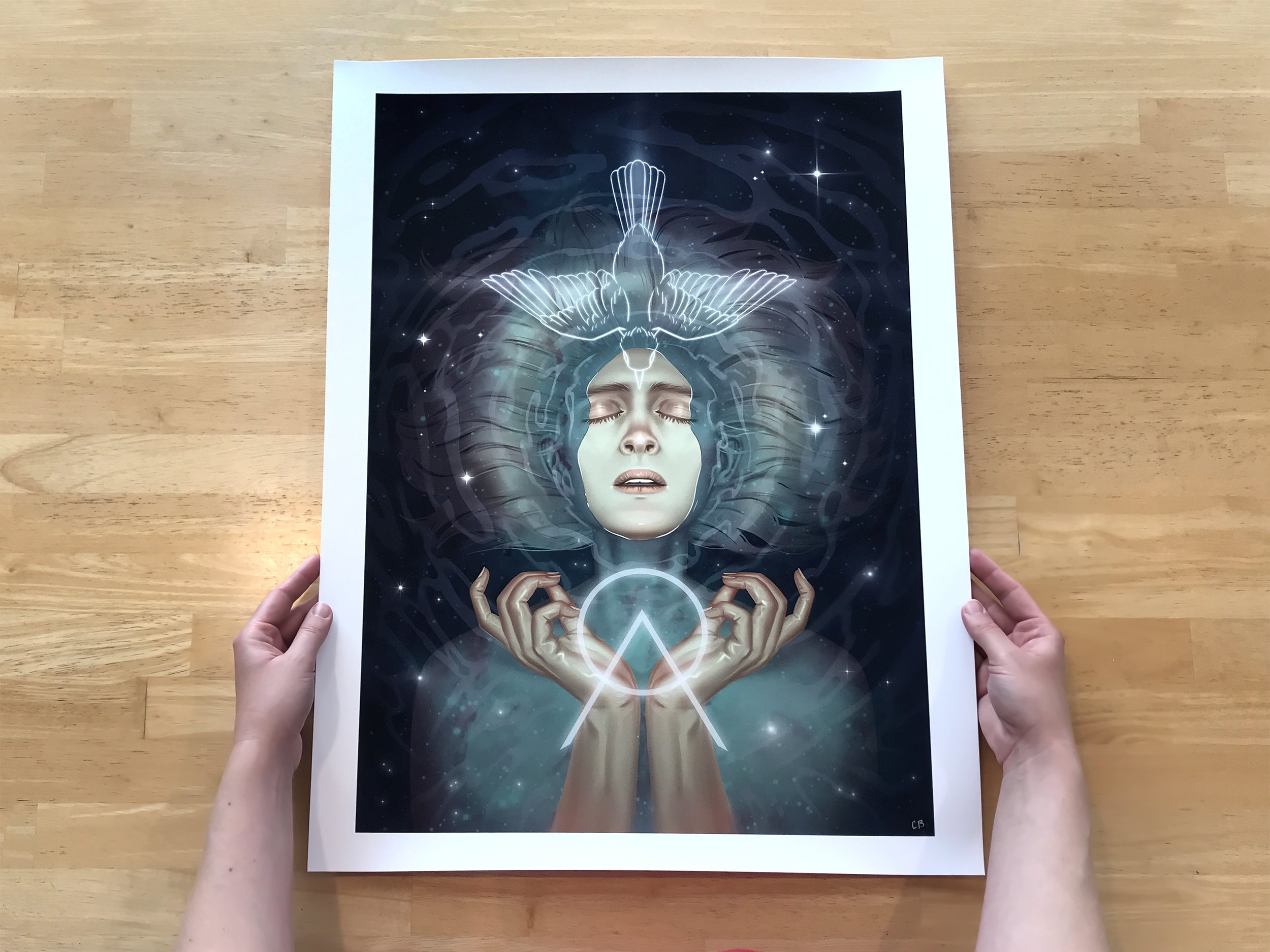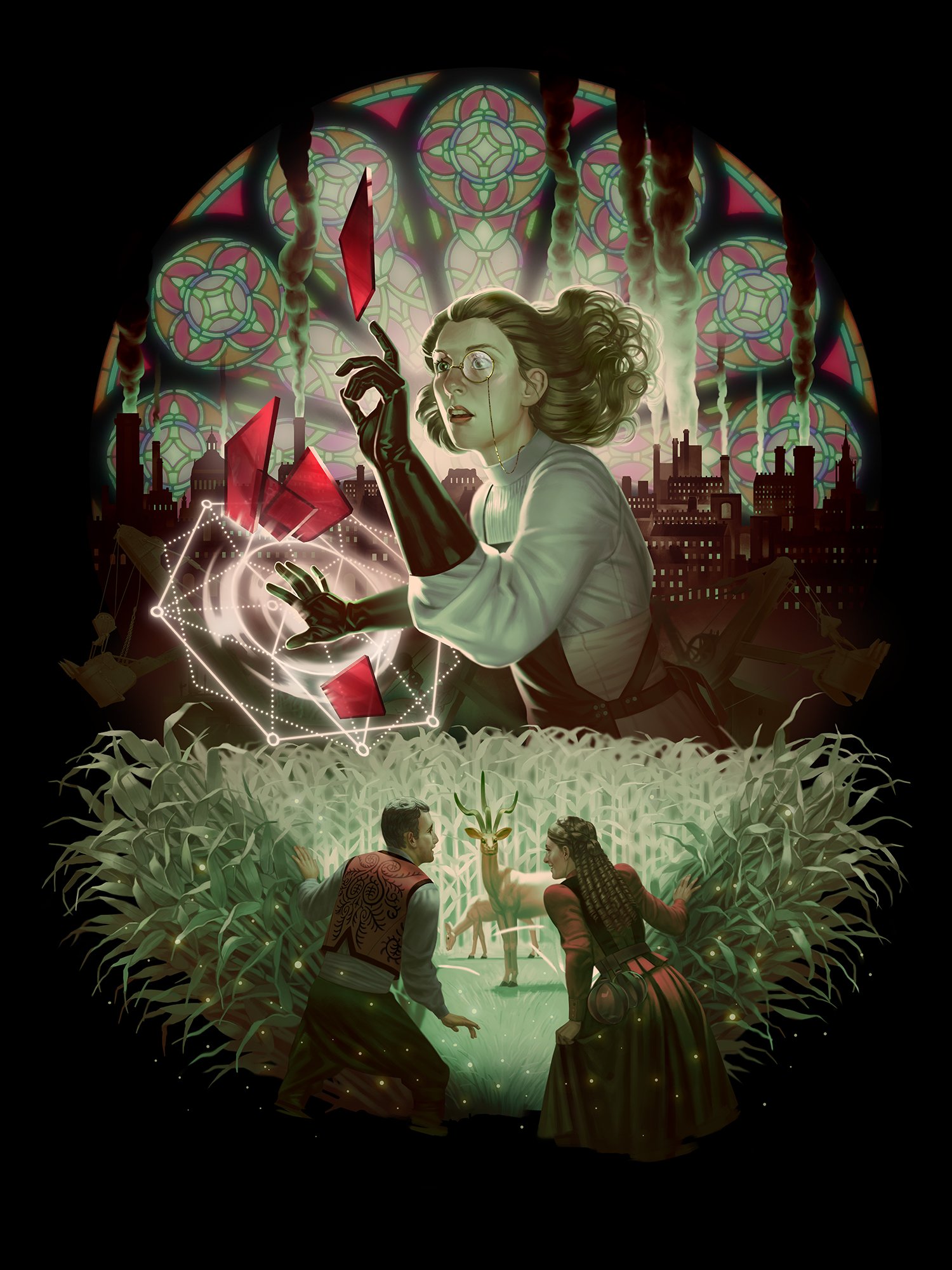I am happy to announce that my "Cover Story" exhibit that was up at Artifactory is going to have a new location! It is moving to Pappajohn Biomedical Discovery Building (PBDB) on the University of Iowa Campus. The art will be up from November 8 to March 1, 2024, with the building accessible to visitors from 7am-6pm Monday-Friday. This is a beautiful location on the skywalk between buildings. They even have a Java house in PBDB so you can grab a coffee while browsing. There will be a short reception on Nov 16 from 4:30-5:30pm. All are welcome!
With all of the busyness this year, I did not get around to sharing one of my favorite covers. It's a YA fantasy with bird people and dragons. What's not to love? I will share how I refined this composition to make it more dynamic and how I utilized reference material for believable wings.
Below are the preliminary sketches featuring two of the main characters. It was a no brainer to include a dragon and it was also important to show the relationship between the two characters. That narrowed down the scope of possibilities, which is helpful when you have a hundred directions to go in for a book cover.
We went with the third sketch which has the best narrative clarity showing the two characters preparing to fight the dragon. It also illustrated the spirit world from the novel in the top part of the composition, which gave it an advantage over the other two.
For this cover, I branched out to explore expressive glyphs in the title font. There were also key elements in the composition to utilize for overlap effects, such as the floating shapes. I made an effort to give the title some effervescence by using loopy letters that complimented the wispy background.
With the concept phase completed, I set out gathering my usual reference material for all parts of the illustration. I use indirect reference for nature-based content, like wings. Keep in mind that wings are just big flappy hands, which is a helpful basis for anatomy and disturbing thoughts of chicken people.
Above is my page of reference just for wings. I look up the birds that the figures are based on and use a flying fox for the dragon wings. Pro tip is to use big bats instead of small bats for dragon wing reference as the proportions and physics will be closer. Big bat wings are really bendy under all that weight and the anatomy is easier to see. Also they're cute, so treat yourself.
You might ask why I have so many bird wing references? This is because there is no perfect reference wrapped into one image (unless you pose a model or maquette), so I have one photo that gives insight into back-lighting, another for the general pose, and then one photo might be perfect for just one of the wings.
These are the 3D models I used for the figures and the dragon. This gives me the best information for lighting, anatomy, and perspective. It's not the perfect reference, but I can synthesize it with my reference photos of real animals to get the right balance of realism and believability. Both of these models are from Daz3D, which is my go-to for people especially because I can pose quickly and customize faster than models built from scratch.
Here is an annotated version of the characters to help you understand what I take or don't take from the reference image. I am making comparisons to the cover sketch of the figures and decide what is a helpful improvement and what should be disregarded in terms of lighting and pose. Most of the reference from this image is adopted, but the poses of the hands are not naturalistic. I take some photos of my own hands, which gives me better reference.
That's about half of my reference material for this book, so there is even more where this came from. Good, accurate reference material is your friend!


















